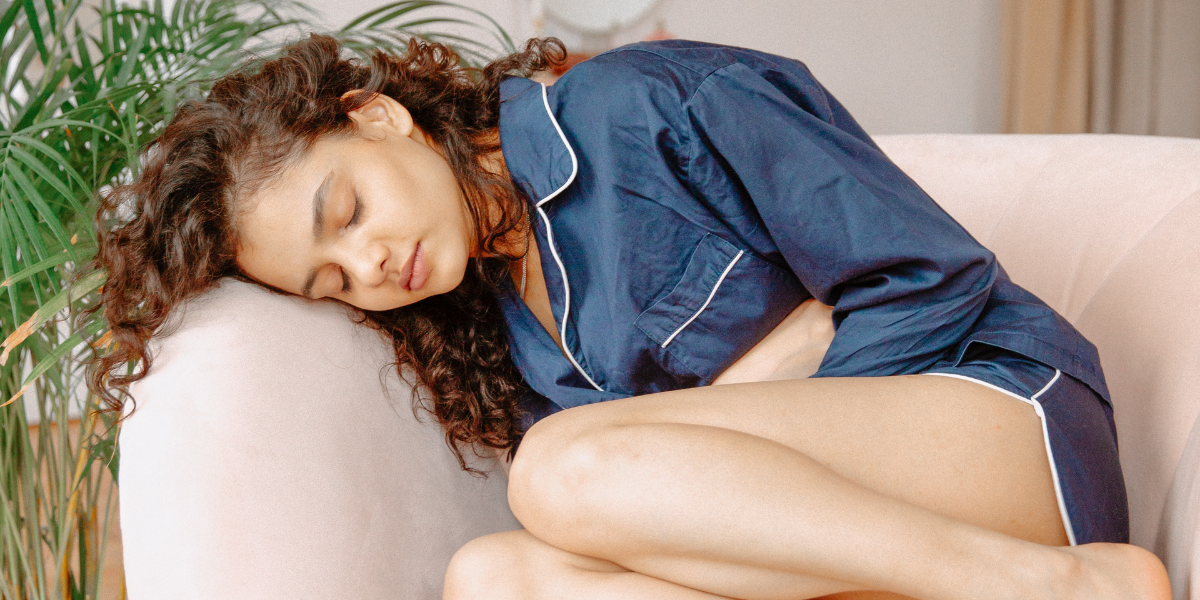Cycle syncing your workouts: what you need to know
At The Know, we’re definitely not gym rats. But when we do work out - whether that’s a HIIT session or a yoga class - we’ve found that it definitely comes easier on some days than others.
While this could be attributed to things like how much sleep we’ve had, our mental state and how hydrated we are, it might also be down to our hormones. Because of this, some fitness experts believe we should sync our exercise routines with our menstrual cycles.
We spoke to our friends at The Female Curve, a platform which offers women tailored exercise programmes based on the principle of menstrual syncing, to find out more.
No ‘one-size-fits-all’ approach
Before you start, it’s important to remember that there’s definitely no “one-size-fits-all” approach when it comes to menstrual syncing. While experts in the field often go by the textbook 28 days, we know that everyone experiences their period differently - plus a lot of the guidance out there doesn’t account for the impact of hormonal contraception.
Although the programme created by The Female Curve’s founder Evgenia Koroleva takes into account the fact that each body is unique, she believes that anyone can use their hormones to their advantage when exercising. “They’ll become your superpower and help you to achieve your goals in a kinder, more nurturing and sustainable way,” she told us.
When to go hard
Proponents of hormonal syncing describe the first half of a menstrual cycle as the strong phase and the second half as a calmer, more restorative phase. This is because oestrogen levels are typically higher in the first few weeks of a menstrual cycle - making it a time well-suited to strength training and cardio workouts.
The start of your period is therefore “the time you’re most likely to smash your personal best as a woman”, said Koroleva. It’s the time of the month when you should “go for it”, she added, as you’ll be “rewarded with the results you expect and more”.
Use ovulation to your advantage
Ovulation - which usually occurs around 12 to 16 days before your period starts - is “your absolute power hour”, researcher Kelly Lee McNulty told The Guardian in 2021. This is because our oestrogen levels peak just before we ovulate. The hormone is thought to have a positive effect on our moods and “might increase your motivation to train”, she said.
Oestrogen is also thought to reduce muscle soreness - although McNulty advised paying extra attention to warming up during this time of your cycle, as it can also make ligaments and tendons more lax.
Time to slow down
During the second half of our cycles, and after ovulation, we enter a calmer, more restorative chapter (known as the “luteal phase”). At this stage of our cycle, some fitness experts suggest that we should prioritise rest and recovery, prioritising low-intensity workouts and sleep.
“It’s ideally not the time to smash out a HIIT session or put your body into calorie deficit,” said Koroleva. “Doing so would actually put your body into fight and flight mode, guaranteeing you won't hit your goals, leaving you exhausted,stressed and depleted.”
Exercise as pain relief
Although all bodies are unique and are impacted by exercise in different ways, some studies have shown that moderate-intensity exercise - such as yoga or pilates - can be beneficial for PMS and period symptoms. So if you feel up to it (and definitely don’t overdo it), light exercise could help offset inflammatory responses such as cramping - and could make you feel a bit better.
A final note
It’s important to remember that all bodies and menstrual cycles are different - and what works for you might not work for someone else.
What really counts is being kind to your body and exercising in a way that feels good to you in that moment, whether that’s taking part in a gym class, going on a long walk in the sunshine or dancing the night away with your friends.
To find out more about cycle-syncing workouts, check out The Female Curve’s coaching programme. There are also loads of engaging and informative videos on TikTok!



